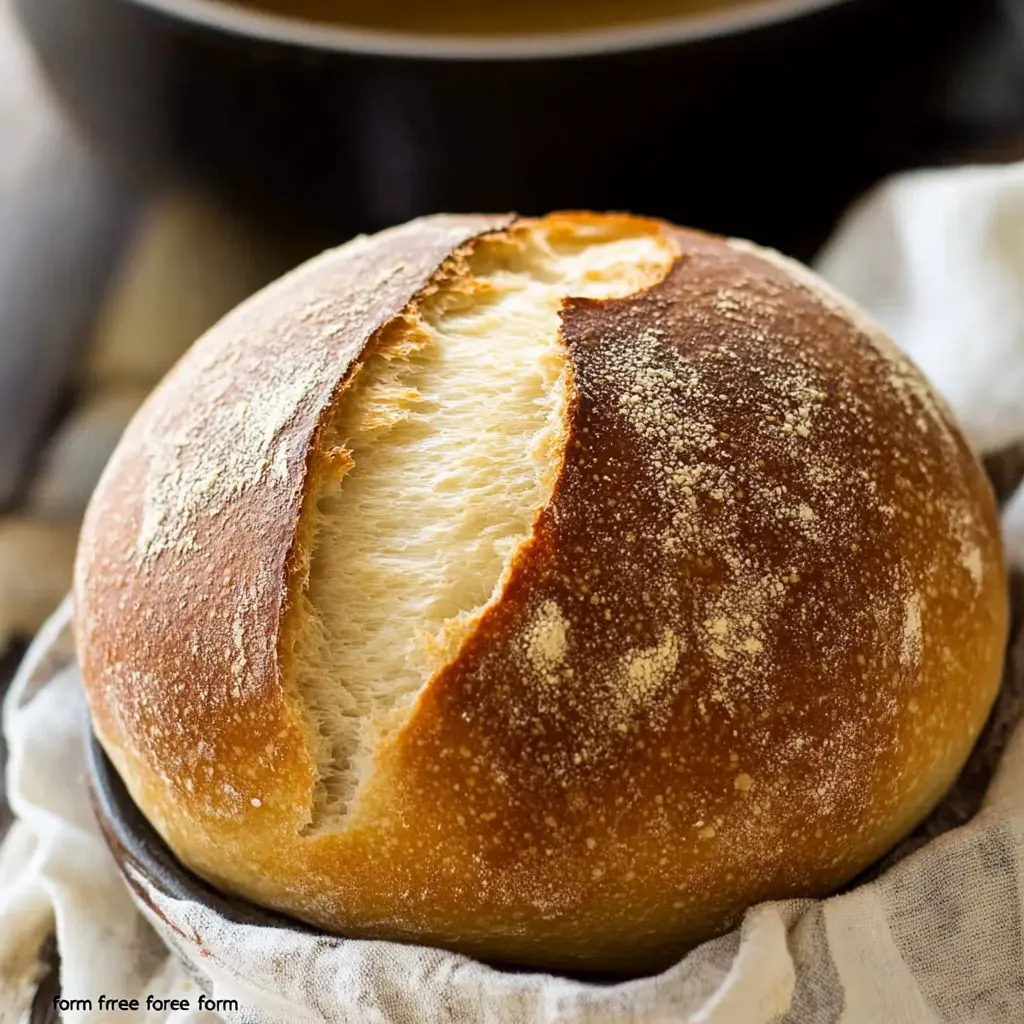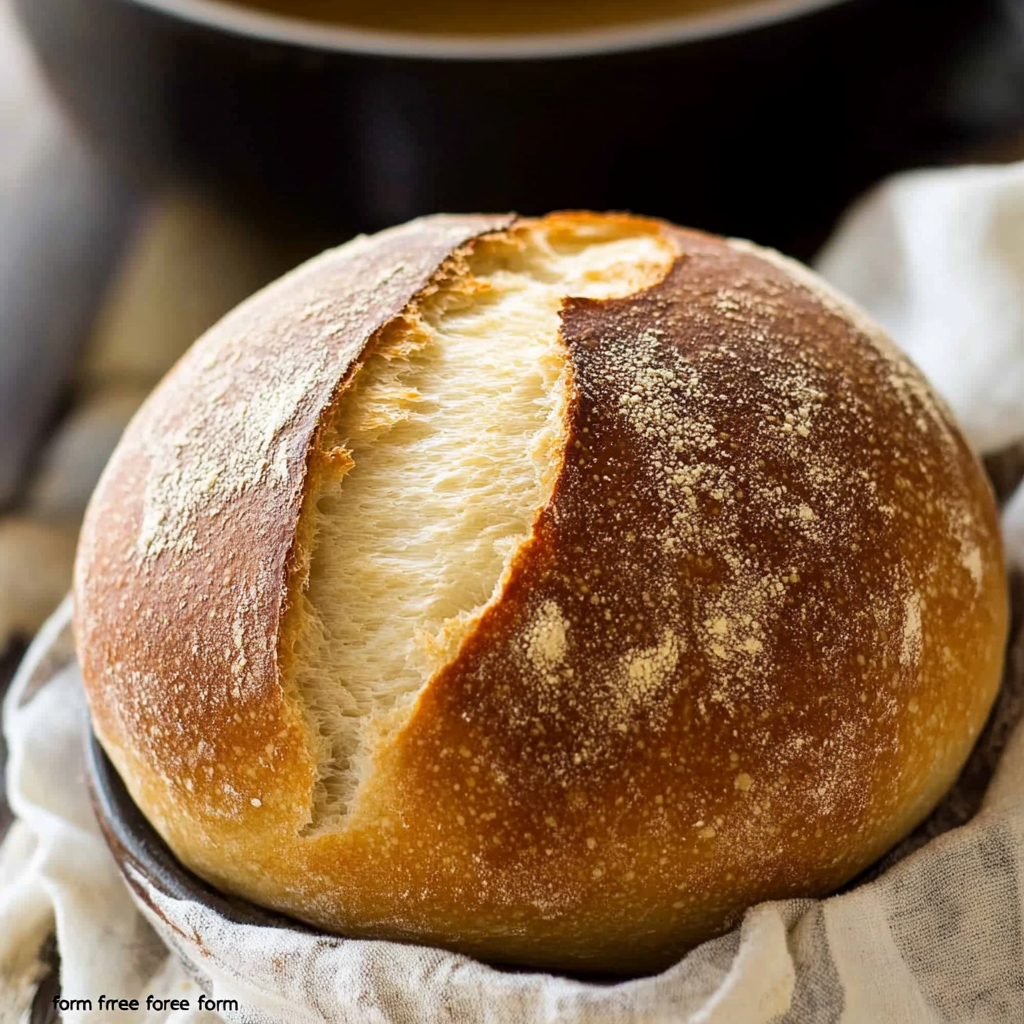There’s a certain poetry to making sourdough bread. The quiet rhythm of mixing, folding, and waiting reminds us that some of the best things in life take time. For me, it all started in my grandmother’s cozy cottage kitchen in Provence. The walls always smelled faintly of flour and wild yeast, and her well-worn hands moved instinctively through each step, no timer required. Her sourdough bread wasn’t just food—it was a ritual, a way to slow down and connect.
In this detailed guide, I’ll walk you through every step of making sourdough bread from scratch. Whether it’s a chilly winter morning or a summer afternoon, this process will fill your home with warmth and the scent of rustic French baking. This article is tailored for beginners and perfect if you’re craving authentic, flavorful, and beautifully crusted French sourdough.
🥖 Why Bake Sourdough Bread?
Sourdough bread is naturally leavened using a wild yeast starter. This ancient method requires no commercial yeast and results in a loaf that’s easier to digest, more flavorful, and often better tolerated by people sensitive to gluten.
Key benefits of baking sourdough bread:
- No commercial yeast needed
- Rich, tangy flavor from lactic acid fermentation
- Longer shelf life due to natural acidity
- Healthier gut profile thanks to prebiotics and probiotics
- A deeply rewarding, hands-on process
🧾 Ingredients (for 3 servings)
This recipe makes one medium-sized loaf, perfect for a household of three or a few hearty sandwiches.
- 150g (5.35 oz) bubbly, active sourdough starter
- 250g (8.80 oz) warm water (filtered preferred)
- 25g (0.90 oz) olive oil
- 500g (17.65 oz) bread flour (avoid all-purpose for better gluten development)
- 10g (0.4 oz) fine sea salt
- Fine ground cornmeal or parchment paper (for dusting)
🔪 Recommended Equipment
To bake sourdough bread successfully, these tools will make the process smoother:
- Kitchen scale (essential for accuracy)
- Large mixing bowl
- Dough scraper
- Tea towel or plastic wrap
- Dutch oven or lidded baking dish
- Banneton proofing basket or lined bowl
- Bread lame or sharp razor
🕒 Overview of the Process
- Feed your starter
- Mix dough & autolyse
- Add salt
- Bulk fermentation with stretch & folds
- Shape the dough
- Final proof (cold fermentation)
- Score and bake
- Cool and enjoy!
🧑🍳 Step-by-Step Sourdough Bread Instructions
1. Feed the Starter (6–8 hours before mixing)
Make sure your sourdough starter is well-fed and active. It should double in size, appear bubbly, and pass the float test (a spoonful dropped in water should float).
🔍 Focus Keyword Tip: A healthy sourdough starter is key to perfect sourdough bread.
2. Autolyse (Mix Flour & Water – 30 minutes)
In a large bowl, combine 250g warm water and 150g starter. Stir well, then mix in 500g bread flour until you have a shaggy, sticky dough. Cover and let rest for 30 minutes.
This step begins gluten development and makes the dough easier to work with later.
3. Add Salt and Olive Oil
After autolyse, add 10g fine sea salt and 25g olive oil. Wet your hands and mix until incorporated. The dough will feel more elastic and slightly tacky.

4. Bulk Fermentation & Stretch-and-Folds (4–5 hours)
Let your dough rise at room temperature. During the first 2 hours, perform a set of stretch-and-folds every 30 minutes. To do this:
- Grab one edge of the dough
- Stretch it upward, then fold over the center
- Rotate the bowl and repeat 3 more times
Repeat 4–5 times total. Then let the dough rest undisturbed until it has risen by about 50%.
❄️ In colder months, place the bowl in your oven with just the light on to help it rise.
5. Pre-shape and Rest (15 minutes)
Gently turn the dough onto a lightly floured surface. Pre-shape it into a round by folding the edges toward the center, then flip seam-side down. Let it rest for 15 minutes.
6. Final Shaping and Proofing (8–12 hours in fridge)
Dust a banneton or lined bowl with rice flour or a mix of flour and cornmeal. Shape your dough into a tight ball or oval and place it seam-side up.
Cover and refrigerate overnight for a cold proof. This step enhances flavor and makes scoring easier.
7. Bake the Sourdough (45–50 minutes)
Preheat your oven to 475°F (245°C) with a Dutch oven inside. Carefully transfer your dough onto parchment, score the top, and load it into the Dutch oven.
- Bake covered for 20 minutes
- Uncover and bake for 25–30 minutes until the crust is deep golden
🌟 Sourdough Bread Secret: Steam is crucial for that iconic, crackly crust.
8. Cool and Slice
Let your loaf cool completely (at least 1 hour) before slicing. Cutting too early can result in a gummy interior.
🧡 French Touches for Your Sourdough Bread
Though sourdough is global, French bakers often use subtle touches to make their loaves unique:
- Olive oil: Adds tenderness and flavor
- Sea salt from Camargue: Enhances the dough’s taste without overpowering
- Fermentation finesse: French sourdough often relies on a slow rise and minimal handling
🍞 Variations to Try
- Herbes de Provence: Add 1–2 tsp dried herbs to the final mix.
- Walnut & Fig: Fold in chopped walnuts and dried figs during shaping.
- Whole Wheat Blend: Swap 20% of the flour for whole wheat for a deeper flavor.
🥗 What to Serve With Sourdough Bread
- Creamy French brie or camembert
- Herbed olive tapenade
- Sliced tomatoes with fleur de sel
- Soup à l’oignon (French onion soup)
- Ratatouille for a rustic, warm pairing
🧊 How to Store and Reuse Leftovers
- Store at room temp in a linen bread bag for up to 3 days
- Freeze slices individually in zip bags
- Make croutons, French toast, or breadcrumbs with older bread
🛠️ Troubleshooting Common Issues
| Problem | Possible Cause | Fix |
|---|---|---|
| Dough too sticky | High hydration or under-kneading | Wet your hands, stretch carefully |
| Flat loaf | Over-proofed or weak starter | Shorten bulk rise, feed starter more frequently |
| Dense interior | Underproofed or poor gluten development | Allow more bulk rise, autolyse longer |
🌍 Learn More About Sourdough Bread
- Why French Bread Is the Best – Saveur
- Visual Guide to Gluten Development – The Perfect Loaf
- The Role of Salt in Bread Dough – King Arthur Baking
- Sourdough Community & Recipes – The Fresh Loaf
📌 Sourdough FAQ
Q: How long can sourdough bread stay fresh?
A: Up to 5 days, though it’s best within 2–3.
Q: Can I bake sourdough in summer without overproofing?
A: Yes! Use cold water, and shorten the bulk fermentation by monitoring dough closely.
Q: Can I scale this recipe?
A: Absolutely. Adjust ingredient weights proportionally and proof accordingly.
🧑🍳 Final Words
Sourdough bread is more than just a food—it’s a living, breathing practice. Whether you’re baking in a snowy winter kitchen or a summer garden cottage, the steps remain grounded in patience and care. Once you make your first loaf, you’ll understand why so many home bakers around the world embrace the ritual.
You don’t need to be a professional chef to make real French-style sourdough bread. You just need flour, water, salt, and heart.


